Managing business finances can be a daunting task, especially for small business owners who may not have a background in finance. However, it is crucial to have a solid understanding of your company’s financial health in order to make informed decisions and ensure long-term success.
One of the first steps in managing business finances is to create a budget. This involves tracking your income and expenses, and setting realistic goals for spending and saving. By creating a budget, you can identify areas where you may be overspending and make adjustments to ensure that you are staying within your means.
Another important aspect of managing business finances is to regularly review your financial statements. This includes your balance sheet, income statement, and cash flow statement. By reviewing these statements on a regular basis, you can track your company’s financial progress and identify any areas that may need improvement. Additionally, it is important to keep accurate records of all financial transactions and to reconcile your accounts regularly.
Assessing Your Financial Situation
Analyzing Income and Expenses
The first step in managing your business finances is to analyze your income and expenses. This will help you understand where your money is coming from and where it’s going. Start by gathering all of your financial records, including bank statements, credit card statements, and receipts. Use this information to create a budget that outlines your monthly income and expenses.
When analyzing your income, consider all sources of revenue, including sales, investments, and loans. It’s important to have a clear understanding of your income so you can make informed decisions about your spending and investments.
When analyzing your expenses, categorize them into fixed and variable expenses. Fixed expenses are regular expenses that don’t change from month to month, such as rent or salaries. Variable expenses are those that change from month to month, such as utilities or inventory costs. By understanding your fixed and variable expenses, you can identify areas where you may be able to cut costs.
Establishing Financial Goals
Once you have a clear understanding of your financial situation, it’s important to establish financial goals. These goals should be specific, measurable, attainable, relevant, and time-bound. For example, you may set a goal to increase your revenue by 10% over the next six months.
To achieve your financial goals, you’ll need to create a plan of action. This plan should outline the steps you’ll take to achieve your goals, including any changes you’ll make to your budget or spending habits. It’s important to regularly review your progress toward your goals and make adjustments as necessary.
Remember, managing your business finances is an ongoing process. By regularly assessing your financial situation and establishing clear goals, you can make informed decisions that will help you achieve long-term success.
Section 3: Creating a Budget
Creating a budget is a crucial step in managing business finances. It allows you to plan and control your spending, identify areas where you can cut costs, and ensure that you have enough cash flow to cover your expenses. Here are some key steps to creating an effective budget:
Identifying Fixed and Variable Costs
The first step in creating a budget is to identify your fixed and variable costs. Fixed costs are expenses that do not change regardless of your business’s sales volume, such as rent, salaries, and insurance. Variable costs, on the other hand, are expenses that change with your business’s sales volume, such as raw materials, shipping costs, and marketing expenses. To identify your fixed and variable costs, start by reviewing your financial statements from the past year. Categorize each expense as either fixed or variable, and calculate the total cost for each category. This will give you a good idea of your monthly expenses and help you plan for the future.
Tracking and Adjusting Expenses
Once you have identified your fixed and variable costs, it’s important to track your expenses regularly and adjust your budget as needed. This will help you stay on track and avoid overspending. One way to track your expenses is to use accounting software or a spreadsheet. This will allow you to easily categorize your expenses and see where your money is going. You can also set up alerts to notify you when you are approaching your budget limits. When tracking your expenses, it’s important to review your budget regularly and make adjustments as needed. For example, if you notice that you are consistently overspending in a certain category, you may need to adjust your budget or find ways to cut costs. Creating a budget may seem daunting, but it’s an essential part of managing your business finances. By identifying your fixed and variable costs and tracking your expenses regularly, you can ensure that you have enough cash flow to cover your expenses and achieve your business goals.
Managing Cash Flow
Understanding Cash Flow
Managing cash flow is an essential part of running a successful business. Understanding cash flow involves knowing how much money is coming in and going out of your business. Cash inflows may come from sales, investments, or loans, while cash outflows may include expenses such as rent, salaries, and inventory purchases.
It is important to have a clear understanding of your business’s cash flow to ensure that you have enough money to cover your expenses and invest in growth opportunities. By monitoring your cash flow, you can identify potential cash shortages and take steps to address them before they become a problem.
Monitoring and Forecasting Cash Flow
Monitoring your cash flow involves regularly reviewing your business’s cash inflows and outflows. This can be done using a cash flow statement, which tracks the amount of cash coming in and going out of your business over a specific period of time.
Forecasting your cash flow involves projecting your future cash inflows and outflows based on past performance and anticipated changes in your business. This can help you anticipate cash shortages and take steps to address them before they occur.
Tools such as cash flow forecasting software can help you create accurate cash flow projections and identify potential cash flow issues. By monitoring and forecasting your cash flow, you can make informed decisions about your business’s finances and ensure that you have enough cash on hand to meet your obligations and invest in growth opportunities.
Financing Your Business
Managing your business finances is crucial to the success of your business. One of the most important aspects of managing your finances is securing funding. In this section, we will explore different financing options and how to apply for loans or credit.
Exploring Financing Options
There are several financing options available to small business owners. Here are a few:
- Bootstrap financing: This involves using personal savings or reinvesting profits back into the business.
- Friends and family: You can also consider borrowing from friends or family members who believe in your business idea.
- Angel investors: These are wealthy individuals who invest in startups in exchange for an ownership stake in the company.
- Venture capitalists: These are firms that invest in high-growth startups in exchange for equity in the company.
- Small Business Administration (SBA) loans: The SBA offers a variety of loan programs to help small businesses access funding.
Applying for Loans or Credit
If you decide to apply for a loan or credit, it’s important to be prepared. Here are a few tips:
- Check your credit score: Lenders will look at your credit score to determine your creditworthiness. Make sure your credit score is in good shape before applying.
- Prepare a business plan: Lenders will want to see a detailed business plan that outlines your business model, market analysis, and financial projections.
- Have all necessary documents: Make sure you have all the necessary documents, such as tax returns, financial statements, and legal documents, before applying.
- Shop around: Don’t settle for the first loan or credit offer you receive. Shop around and compare rates and terms from different lenders.
Section 6: Investing in Your Business
As a business owner, investing in your business is crucial for growth and success. Investing can help you expand your operations, improve your products or services, and increase your revenue. However, investing can also be risky, and it’s important to carefully evaluate investment opportunities before making any decisions.
Identifying Investment Opportunities
Before you can invest in your business, you need to identify potential investment opportunities. This can include anything from purchasing new equipment to expanding your marketing efforts. Some ways to identify investment opportunities include:
- Conducting market research to identify customer needs and preferences
- Assessing your current operations to identify areas for improvement
- Staying up-to-date on industry trends and developments
Evaluating Investment Risks and Returns
Once you’ve identified potential investment opportunities, it’s important to evaluate the risks and returns associated with each option. This can help you determine whether an investment is worth pursuing. Some factors to consider when evaluating investment risks and returns include:
| Factor | Considerations |
|---|---|
| Cost | How much will the investment cost? Will it provide a positive return on investment? |
| Risk | What are the potential risks associated with the investment? Can these risks be mitigated? |
| Timing | Is now the right time to make this investment? Will it have a positive impact on your business in the short-term and long-term? |
By carefully evaluating investment opportunities and weighing the risks and returns, you can make informed decisions that will help your business grow and succeed.
Conclusion
In conclusion, managing your business finances is a crucial aspect of running a successful business. By keeping track of your income and expenses, creating a budget, and regularly reviewing your financial statements, you can make informed decisions about your business’s future.
It’s important to stay organized and keep accurate records of all financial transactions. Using accounting software can help simplify this process and save you time and money in the long run.
Another key aspect of managing your business finances is understanding your cash flow. By forecasting your cash flow and identifying potential cash flow issues, you can take proactive steps to avoid financial problems.
Finally, seeking the advice of a financial professional can be beneficial in managing your business finances. A financial advisor or accountant can provide valuable insights and help you make informed decisions about your business’s financial health.


